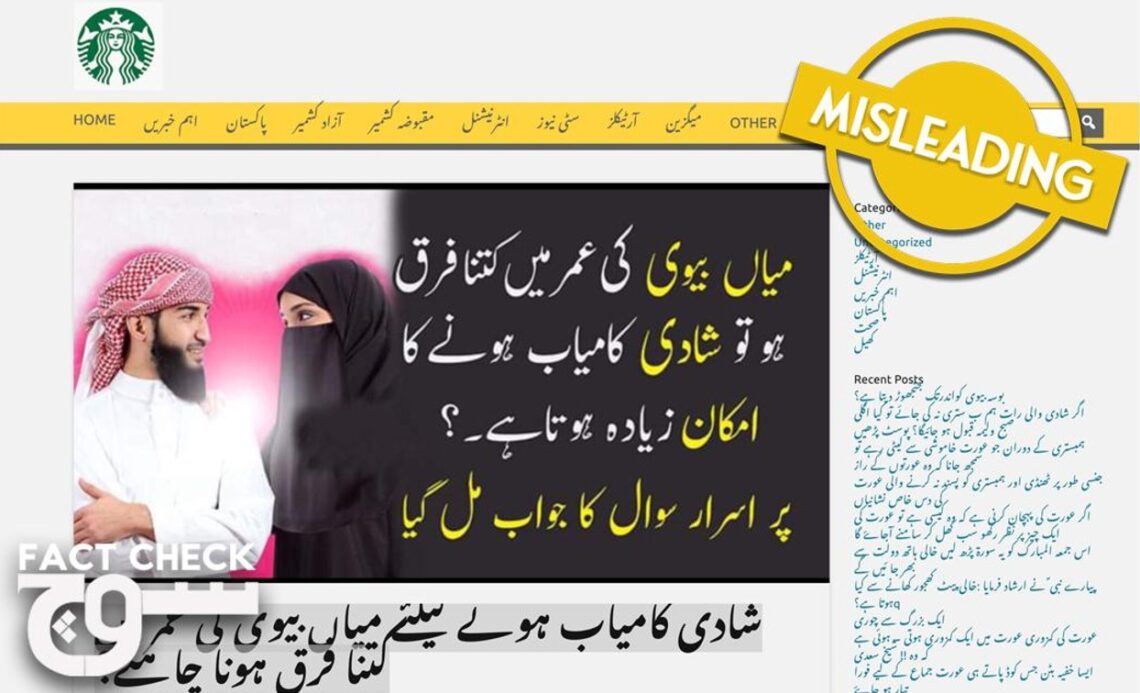
Claims:
● The results of a recent study prove that the greater the age difference between two people in a couple, the lower the probability of divorce.
Fact:
● There is no recent study that conclusively suggests there is an inverse relationship between age difference and probability of divorce.
● The study cited in the article is not recent and was conducted in the United States of America (USA). The aim of the study was in fact to examine the relationship between the amount of money spent on engagement rings and wedding ceremonies and the length of marriage.
On 31 October 2021, Facebook page Shaheed Studio shared an article published by website dogsaddict.site with a headline that translated from Urdu to English reads as: “For a successful marriage what should be the age difference between husband and wife?” The index image used for the article contained text that translated from Urdu to English reads as: “What should be the age difference of husband and wife that lowers the probability of divorce? The mystery has been resolved.” The article was uploaded to the website on 20 August 2021.
The article claims that according to a “recent study” conducted on “three thousands married and divorced couples,” the probability of divorce decreases as the age difference between married couples increases.
The article does not contain a link to the study, nor does it state the country in which the study was conducted — though it is implied that the findings of the study apply in Pakistan as well.
Soch Fact Check found that the article is misleading. There has been no recent study that claims to have found an inverse relationship between age difference and the probability of divorce among married couples, whether in Pakistan or elsewhere.
It appears the article is in fact referring to a study published by Emory University in September 2014. The title of the paper was, ‘A Diamond is Forever’ and Other Fairy Tales: The Relationship between Wedding Expenses and Marriage Duration.” The aim of the research was not to examine the relationship between age difference and probability of divorce, but rather to investigate the relationship between the amount of money spent on engagement rings and wedding ceremonies and the length of time a couple stays together. The survey respondents were not all couples, as claimed in the article, but also included ever-married individuals — those who have been married at least once in their lives although they may not have been at the time of the study — based in the United States.
According to the study, there may be a correlation between age gap and probability of divorce, but this finding was incidental to the study and further research is required before clear conclusions can be drawn. Further, the results are not necessarily representative of Pakistani couples.
Conclusion:
The article is misleading. The authors did not provide external links to the study cited in the article. The research was not conducted recently, nor did it only involve married couples as claimed. The aim of the research was not to examine the relationship between age difference and probability of divorce, nor was this facet mentioned in the conclusion of the paper. Finally, the research was conducted in the USA and so the findings are not necessarily representative of Pakistani couples.
